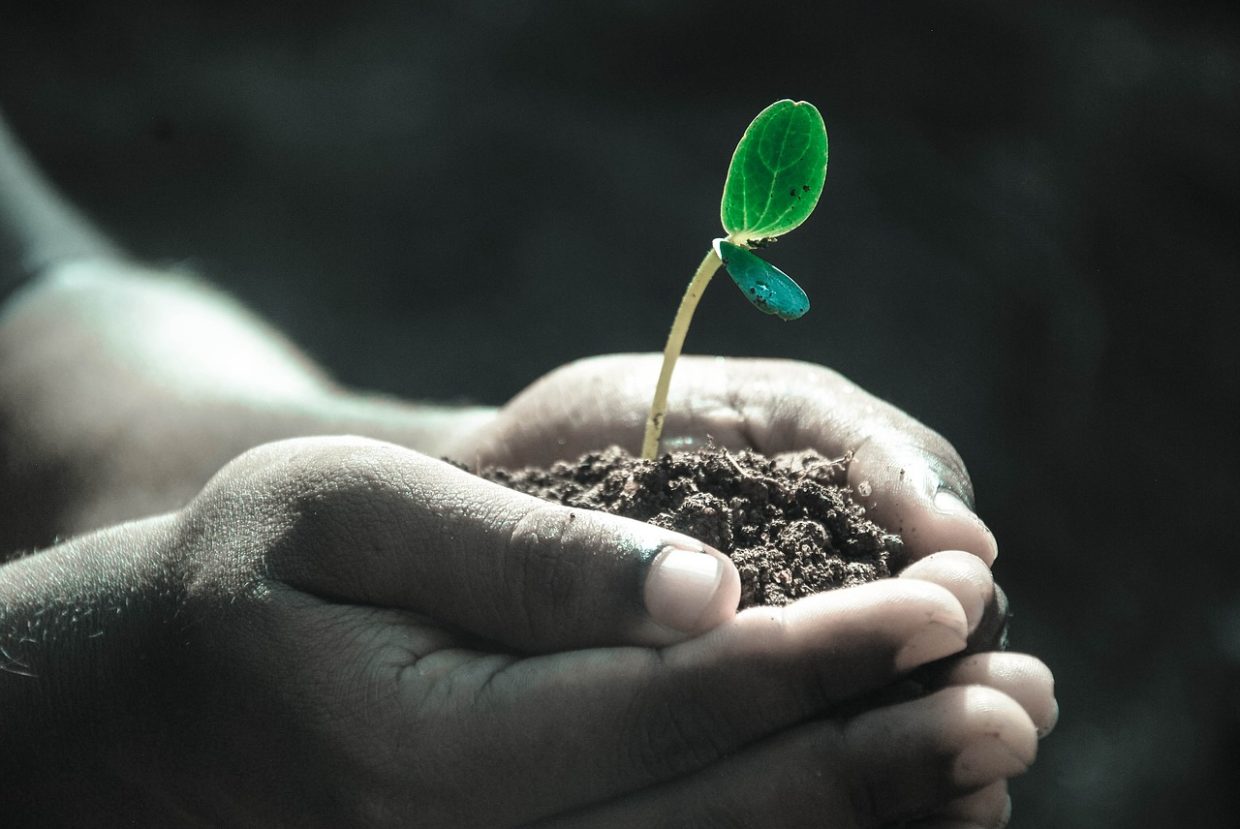Soil nutrients. The main nutrients include nitrogen, phosphorus, potassium, calcium, magnesium and sulfur. Nitrogen (N) is the driving material for plants. Large dark green leaves and significant growth indicate a rich supply of nitrogen. Lack of nitrogen is externalized by the light green coloration of the entire plant. Older leaves take on a yellow to light brown color and wither. The consequence is insufficient plant growth and premature flowering.
Nitrogen in the air ( up to 79 percent in the atmosphere and at least 40 percent in the air found in the soil) can only be used by butterfly plants, to form tubers on the roots. Beyond that, all other plants depend on nitrogen compounds. Nitrate NO3 and ammonia NH3 or possibly ammonium NH4 The demand for pure nitrogen of 8-30 g/m per year, depending on the soil and plants, is covered by the constant transformation of humus and through fertilization. Nitrates act extremely fast and are easily leached out. Ammonium can only be partially taken up directly, it is retained by soil particles, so its effect is more prolonged, however, at the same time transformation into nitrate is carried out. As a foliar fertilizer, urea is absorbed immediately.
Newer forms of nitrogen have a longer-lasting effect and the fertilization process takes place slowly, being systematically absorbed by the plants as the transformation process takes place in the soil via bacteria. Such one-time fertilization can last for half or even one year.

Phosphorus (P) in its pure or P2O5 form is important for the soil and for plants. In combination with calcium, it helps in the formation of tubercles, and in the transformation of the soil. Phosphorus is essential for proper growth of roots, inflorescence buds, fruits and seeds. Lack of phosphorus can be recognized by the initially brownish-green and then often reddish-yellow coloration of the leaves, which in many cases wither to brown. Since phosphorus compounds salts and phosphoric acids are not leached from the soil, they should be used carefully and sparingly. Excess phosphorus is much more common than lack of phosphorus. The more microorganisms and branching roots there are, the easier it is to get phosphorus. The annual requirement for it is about 6-15 g/m. If there is a need for it, a small amount should be used.
Potassium (K) is most often found in the form of potassium oxide K2O dissolved in all plants. Its sufficient amount increases the resistance of plants to cold, diseases and pests. It stimulates water management and circulation and is responsible for flower and fruit formation. Its slight lack is often not noticed. However, it is the cause of smaller crops, and their poorer quality. With a significant deficiency of potassium, older leaves turn yellow-brown from the edge, wither and fall off. On sandy soils, potassium is washed out very quickly; it stays longer on clay or humus soils. It is best distributed in the form of compound fertilizers or compost. The ideal fertilizer, for example, is Azofoska. Special potassium fertilizers come in the form of potassium sulfate, potassium chloride, magnesium kainite. In general, after such treatment, fertilization with potassium alone is no longer needed. In autumn, the administration of potassium can accelerate the maturation of young shoots and thus strengthen their resistance to frost. Over-fertilization with potassium reduces calcium and magnesium, leading to their deficiency. The demand for pure potassium is between
10 and 25 g/m.
Calcium (Ca) responsible for improving soil properties, helps remove harmful substances from the soil, for example, oxalic acid, stimulates the transformation processes of organic substances, treats nutrients, forms tubercles thus improving soil properties. It increases cell division in plants, improves root development, and has a not inconsiderable effect on the germination of plant seeds. Calcium deficiency is characterized by the fact that the leaves of the plant, especially the young ones located on the top shoots, take on a hooked shape, the ends and edges of the leaves wither, the buds die, the stems are weak and the plants are susceptible to diseases and pests. Annually, about 40 ? 70 g/m calcium. It is supplemented by calcium-containing fertilizers or water containing calcium.
Magnesium (Mg) is used to build the green leaf pigment, or chlorophyll. If it is deficient, plants develop insufficiently, fruits are smaller, and of poorer quality. The deficiency manifests itself by the appearance on older leaves of yellow and then brown spots between their veins. The edges usually remain green. Diseased leaves drop prematurely. Magnesium deficiency most often occurs after wet winters. The requirement of about 3 ? 10 grams per square meter.
Sulfur (S) its use by plants is manifold. With its help they form vitamins, mustard oil and various proteins. Its deficiency is recognized by the light green hue of young leaves along with veins. Sulfur enters the soil as SO4 sulfate, which leaches out easily, especially on light soils.





